Introduction
Congratulations, you've finally unlocked Coal Power, the first milestone available in Tier 3 of the Hub. Yes that's right, the time of gathering biomass materials for your biomass burners has finally come to an end. Coal power introduces water as a resource and this is delivered via pipes, a simple but sometimes confusing topic that I will help you understand.
TLDR
If you're just here for the technical information and don't want the reasons why, then your answer is 8 coal generators needing 120 coal per minute (pm) and 360 water pm from 3 water extractors will make 600 MW of power, this is the most common build used in Satisfactory.
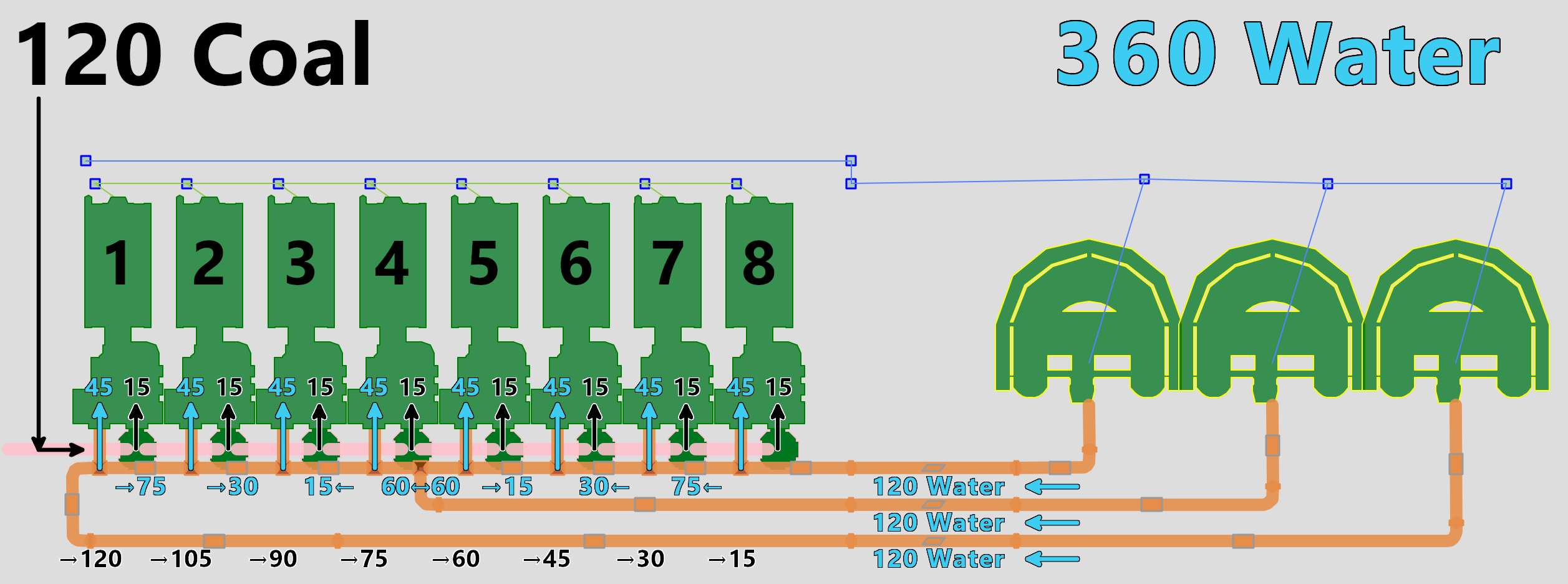
Coal Generator
So I just threw a bunch of numbers at you and you're probably wondering what they mean. Well lets look at the coal generator. It is the first machine you come across with two inputs of different types, on the left is a pipe and the right is a conveyor. A coal generator requires 15 coal pm and 45 water pm an it generates 75 MW of power.
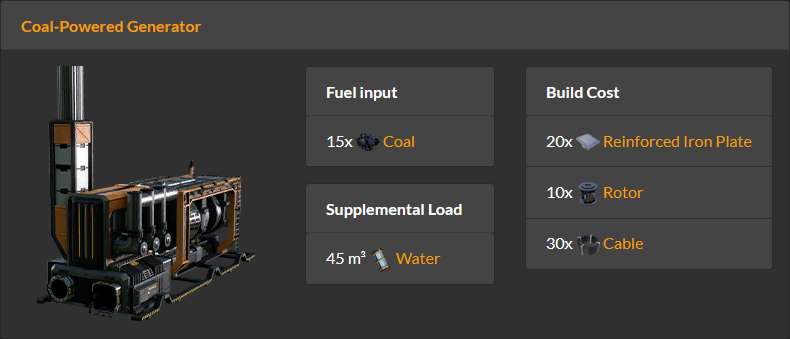
Current Game Stage
So why did I mention above 8 coal generators, where did I pull that magic number from? Well lets look at your current stage in the game progression, you will have unlocked Mk.2 belts and these transport resources at a speed of 120 pm.
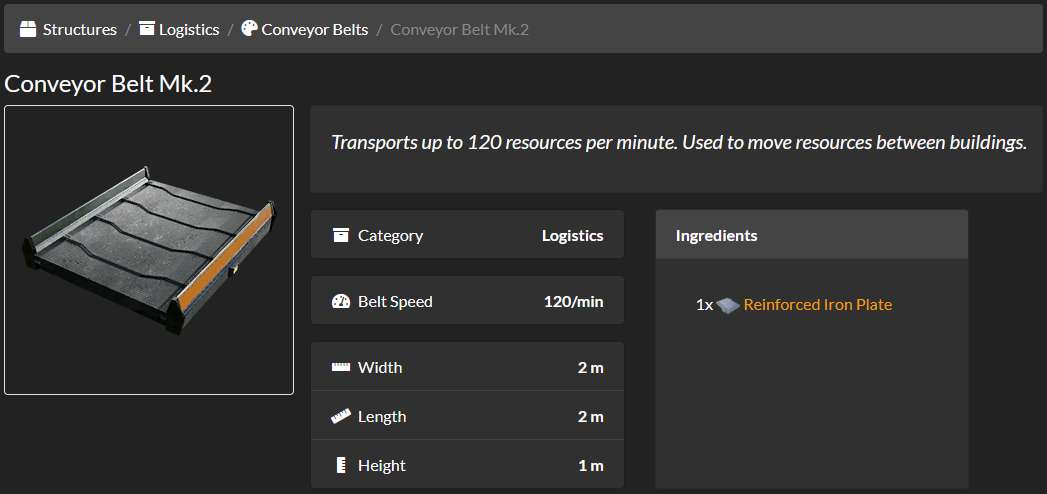
With a miner on a Normal or Pure coal node, you will be able to feed that belt with 120 coal pm. Be aware that the miner on the Normal node will NEED to be overclocked to 200% otherwise it will only provide 60 coal pm.
You will need to have unlocked Overclock Production in the MAM under the Power Slugs branch to be able to overclock a Mk.1 miner on a normal node, if you are on a pure node then this is not necessary.

Coal Maths
Now we know that the maximum amount of coal we can supply on a single belt is 120, and each coal generator requires 15 coal. Dividing 120 by 15 gives us 8, meaning we can optimally fuel 8 coal generators off a single belt. Looking at this build screenshot you can see a belt manifold is used to feed this coal to all of the 8 generators.
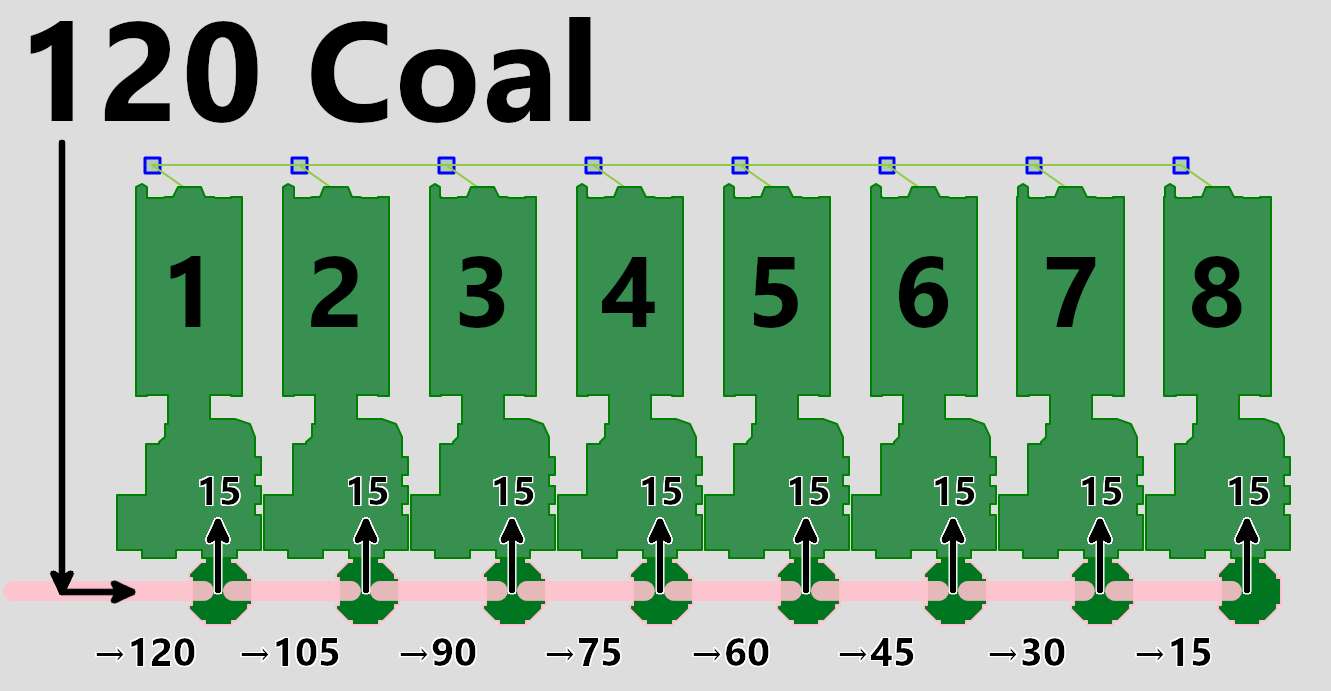
Water Extractor
Now lets look at water, each coal generator consumes 45 water pm so if we multiply 45 by 8 we get 360, meaning we need to supply 360 water pm to these 8 coal generators. The Water Extractor machine was also just unlocked and each water extractor can supply 120 water pm. If we divide 360 by 120 we get 3, that means we need 3 water extractors to optimally fuel 8 coal generators. Wow all these perfect numbers, it's almost like the game developers made it nice and easy.
Pipes
That water will be transported by a Mk.1 pipe and looking at what a Mk.1 pipe can transport it's limited to 300 pm.
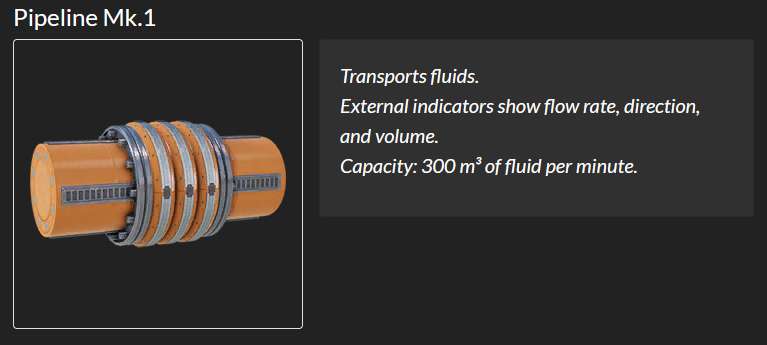
Wait up, so how are we going to be able to feed 8 coal generators needing 360 water pm when that exceeds the pipe maximum throughput rate of 300 pm? Well there's nothing saying that we need to supply that water through just one pipe, it comes down to how you connect those water extractors to the coal generators.
Looking at this build screenshot you can see a pipe manifold is used to feed this water to all of the 8 generators, but as previously stated that's technically not possible.
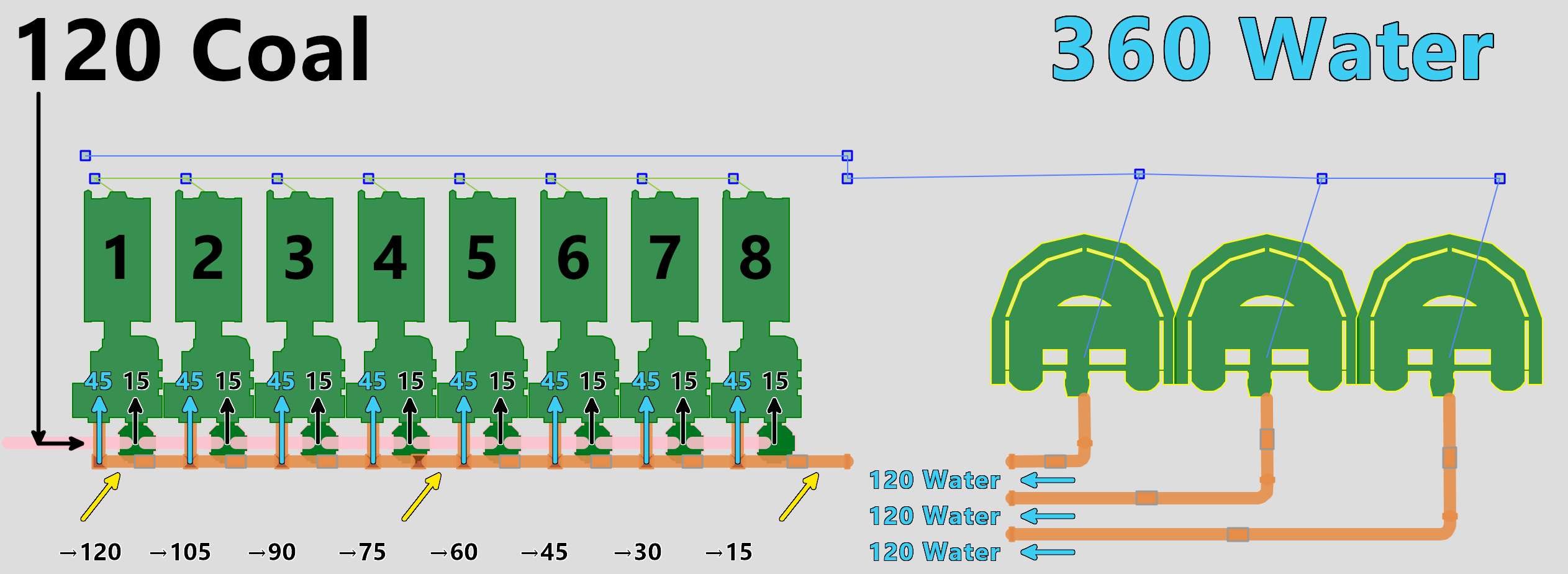
Pipe Maths
If we use three pipes from the three water extractors, we can feed the manifold separately from each end and also from the middle. This effectively distributes that 360 water to all 8 coal generators without exceeding the Mk.1 pipe limitation of 300 pm. You can see the two generators at each end will take 45 water each and the remaining 30 water feeds to generators three and six. The third water extractor feeds in from the middle, so generators four and five take 45 each and then the remaining 30 is split in half for the generators three and six. That means generators three and six both received 30 and 15 water making the 45 required.

Fluids
The thing that is different between belts and pipes is direction, a conveyor belt only moves materials in one direction whereas fluids in a pipe have no direction limitation. Fluids will flow to the lowest point in the pipe network regardless of direction. Technically in the example above the coal generators one, two and three are the furthest away from the water extractor, so on initial startup the water flowing into the manifold from the other water extractors will arrive sooner and will be distributed across the entire manifold, but will be balanced back not long after.
Miner & Water Extractor Power
Now with everything hooked up you are going to need to provide power to the water extractors and the coal miner to initially start the coal generators, the three water extractors will require 60 MW and the Mk.1 miner on a normal node overclocked to 200% will require 12.5 MW. With a total of 72.5 MW required, three biomass burners will suffice. You will need enough fuel in the biomass burners to allow time for the coal to travel from the miner to the coal generators and the same applies for the water extractors.
Generator Power Connector
One last thing, the coal generators will not start producing power until their power connector at the rear of the machine is connected to a power pole or power connector.
Disconnect Biomass Burners
Once the coal generators are running and stable, you can disconnect the power from the biomass burners and connect them to the coal generator power grid. Keep in mind though, if you were to exceed your power capacity on the power grid, the grid will trip and there might be a hassle getting the coal generators up and running. The grid will only trip once you try to pull more power than the grid can supply.
Separate Infrastructure Grid
A logical option here is to dedicate a separate infrastructure power grid for the machines that provide the resources to the generators. With this setup I've just built, one coal generator generates 75 MW of power, and we required 72.5 MW to run the miner and the water extractors. So in this case, we just need to disconnect one of the coal generators from the main power grid and create a dedicated infrastructure power grid for these machines.
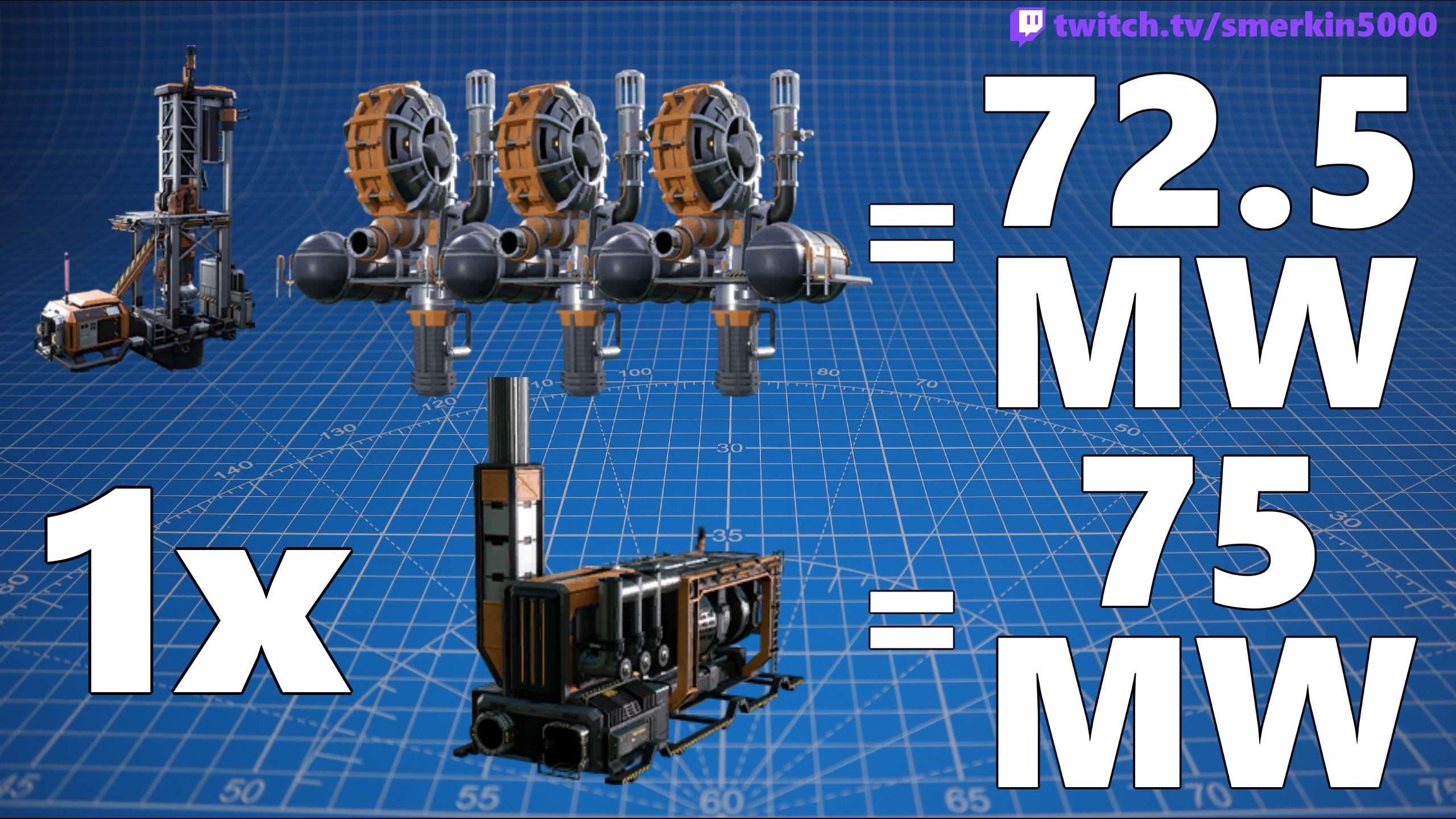
Now in the event of the main power grid being tripped, the machines providing the coal and water to the coal generators will continue to run and are not affected by this tripped grid. You will of course have to fix the issue that caused the main grid to trip, but you can rest assured knowing that the coal generators themselves are receiving their required resources.
Of course, every time you build more coal generators, you will need to dedicate additional coal generators to the infrastructure power grid for the new miners and water extractors required to fuel these new coal generators.
And thats it, by following these steps you will now have stable, self sustaining power for your power grid. But it doesn't stop there, I have some additional information to share with you that will make your life easier.
Manifold Pre-Loading
When using a conveyor belt manifold, the machines at the end of the manifold will take a long time to receive coal, as each machine along the manifold receives half of the coal and so on. This will lead to unreliable power until the whole manifold is saturated, so a way to avoid this is to pre-load each coal generator with stack of coal.
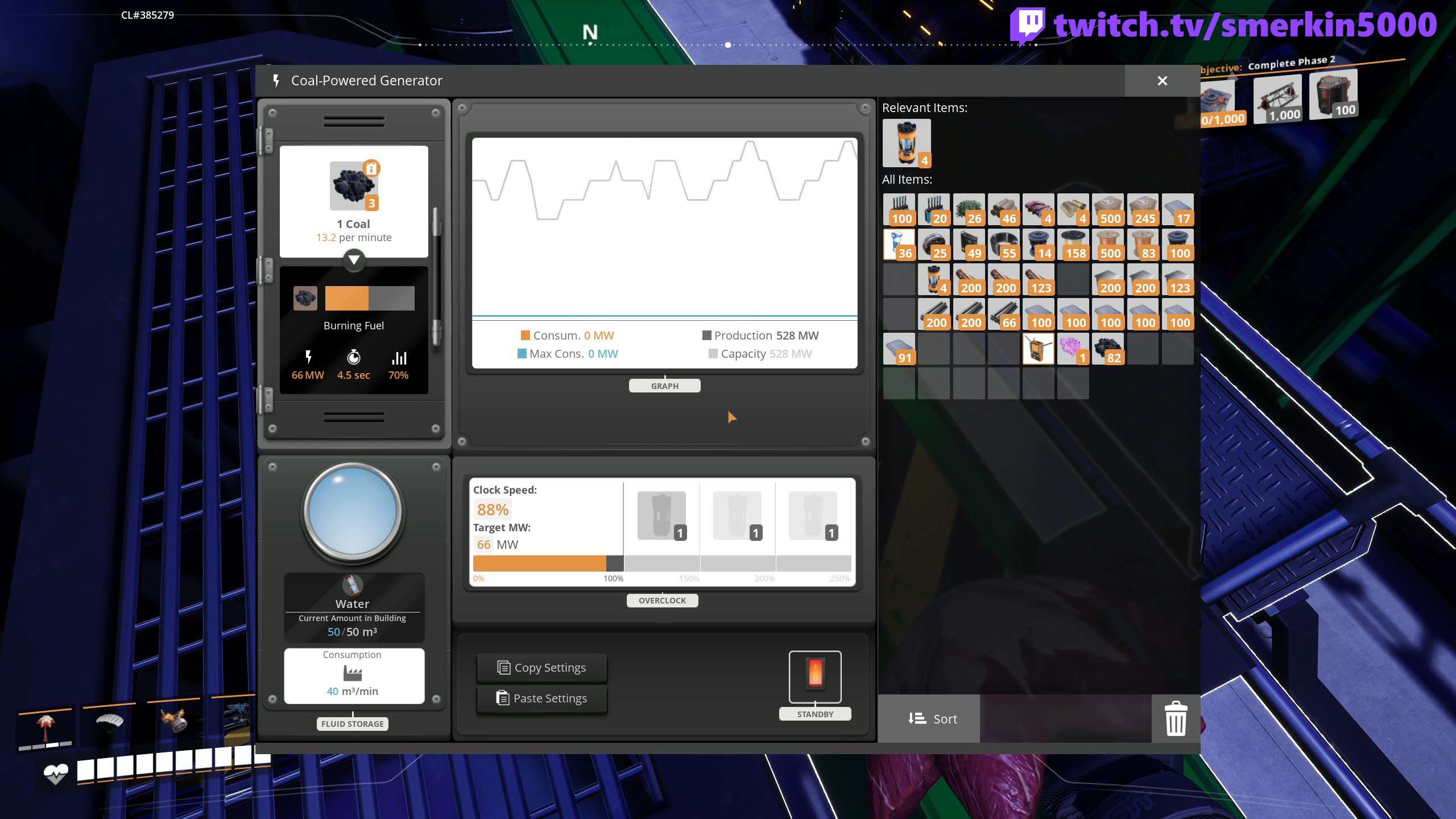
Load Balanced Input
Using a load balanced input instead of a manifold will ensure the generators receive coal equally. For more information on this check out my Manifold vs Load Balancing article.
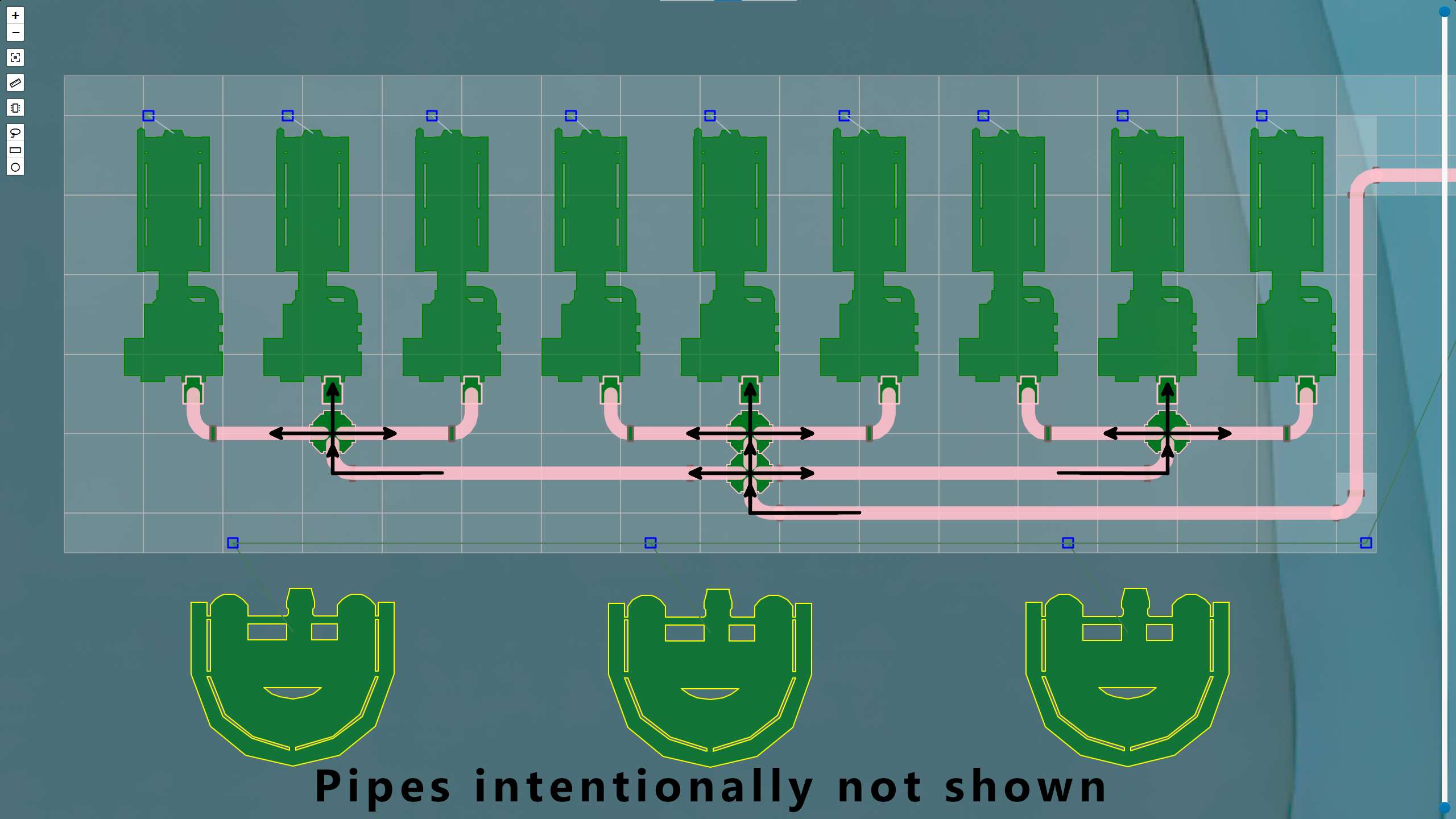
Water Extractor Headlift
Water Extractors have a headlift limitation of 10 meters (m) vertically, which is measured from the centre point of it's pipe output. You can use 5 x 2m foundations stacked vertically to provide a visual guide of 10m. When you need to send water higher than 10m you will need to add a powered pipeline pump before the 10m limitation. A Mk.1 pipeline pump adds 20m of headlift and the Mk.2 adds 50m of headlift. Check the Satisfactory Guru website for more articles about fluid dynamics.
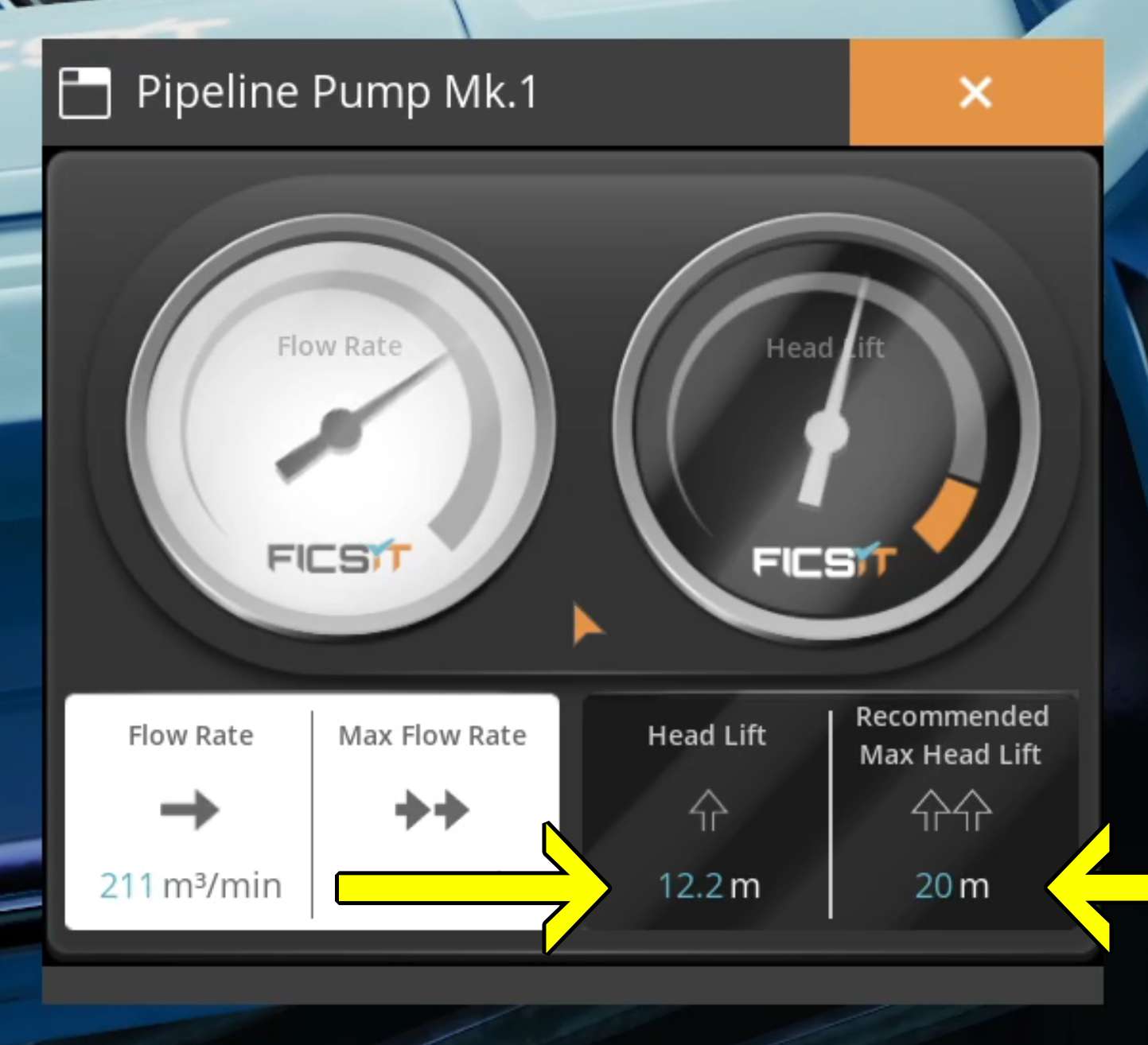 | 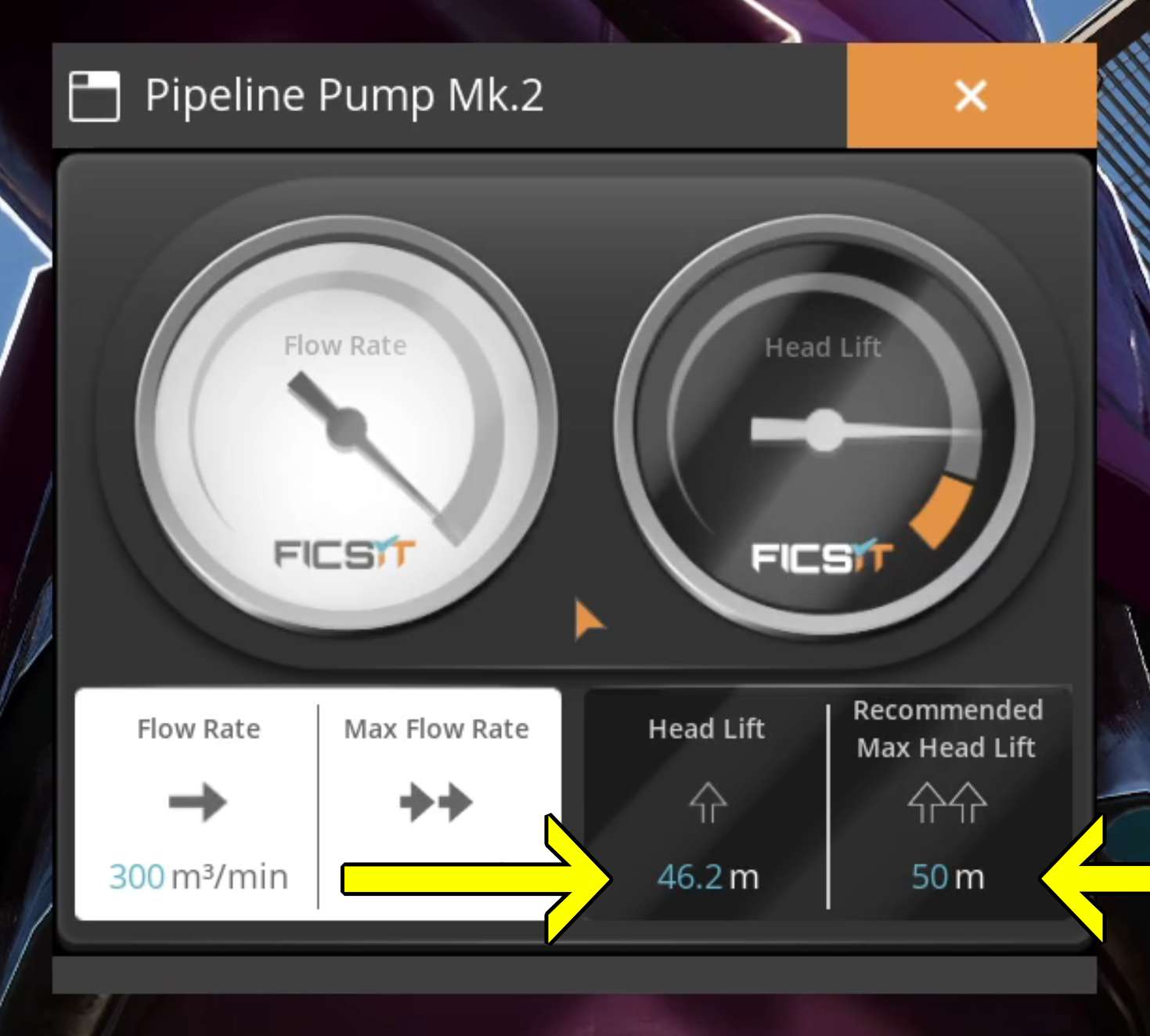 |
Further Reading
If you haven't already realised, Satisfactory is a maths game in disguise with logistics puzzles thrown in. Armed with this knowledge, go forth and build lots and lots of coal power setups in preparation for the next stages of the game.
The Upgrading Coal Power guide is also worth checking out, it goes into detailed information on how to expand your existing coal power and also looks at alternate builds of coal power.
Video
Too much reading? Check out the video for this article here: